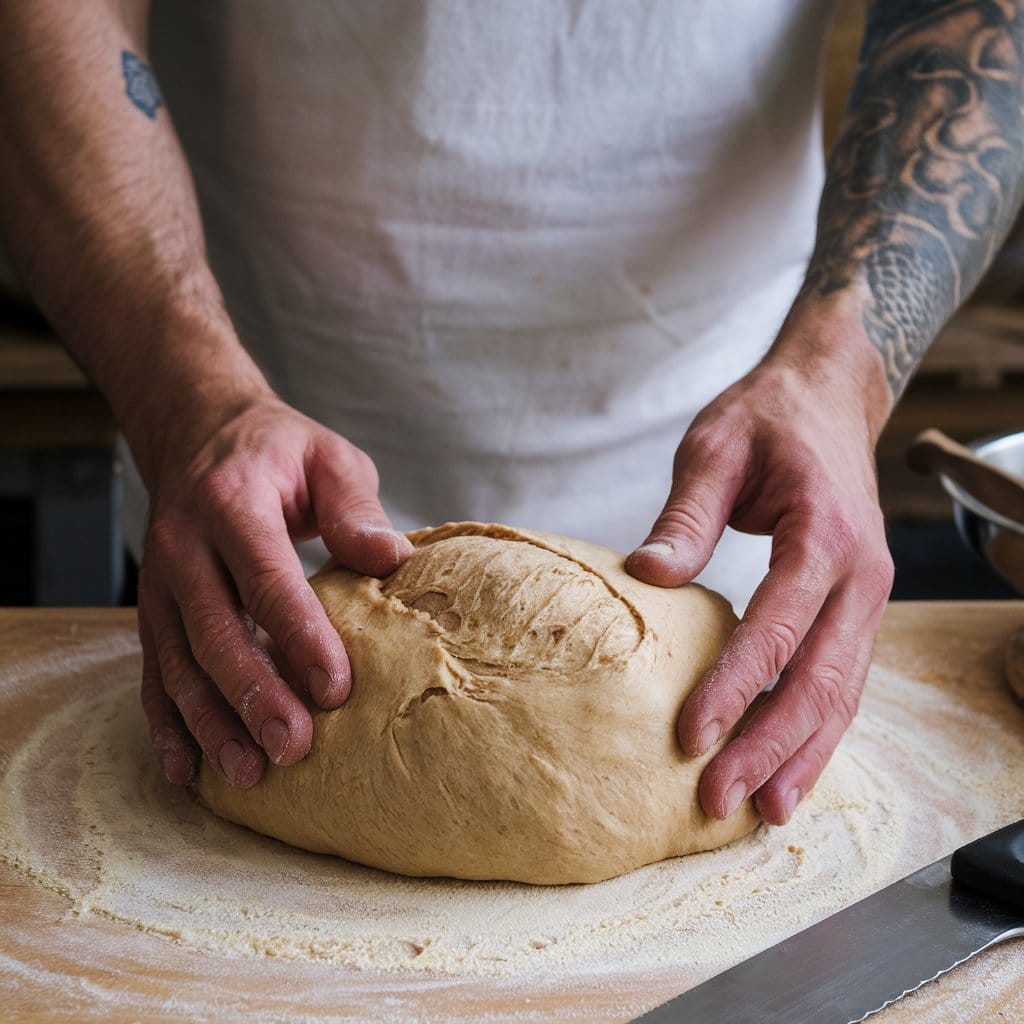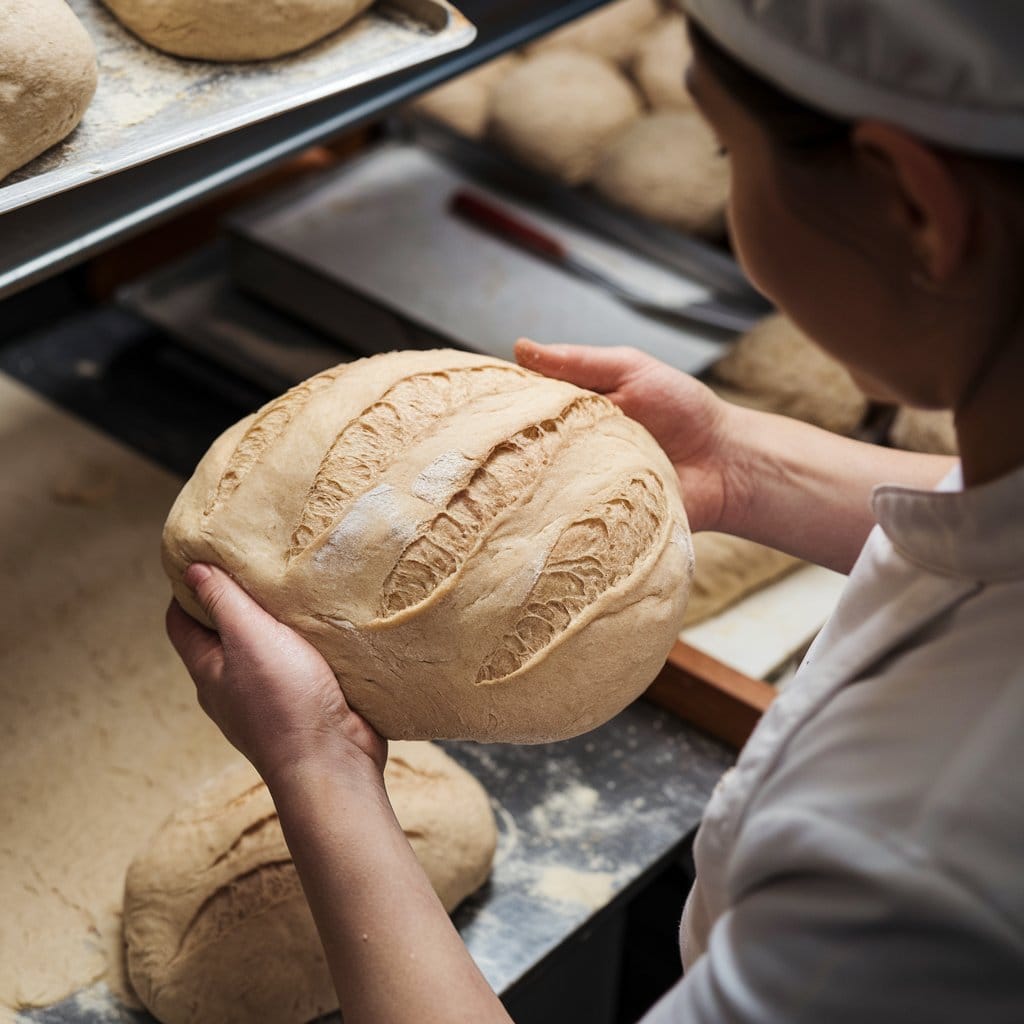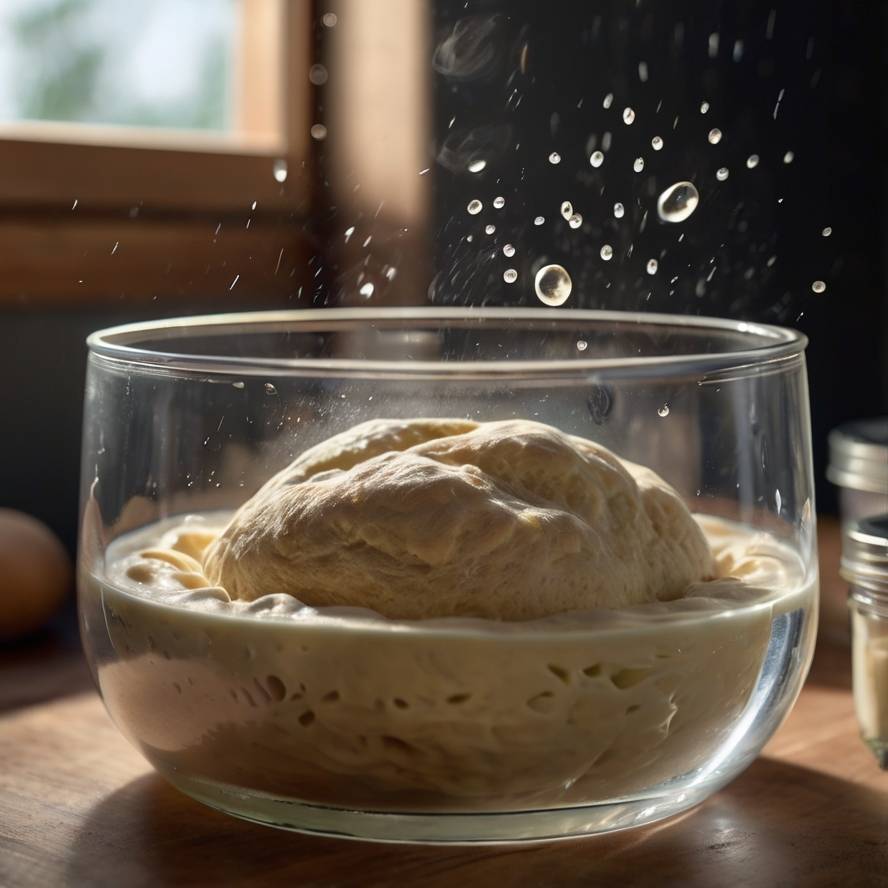Introduction
Bread baking is both an art and a science, and nothing embodies that balance more than fermentation. The Science of Fermentation plays a critical role in transforming simple dough into airy, flavorful bread. Whether you’re an experienced baker or a beginner, understanding the biological processes at work during fermentation will help you improve your baking and troubleshoot common problems.
In this blog post, we’ll take a deeper dive into fermentation—examining the role of yeast, exploring the stages of fermentation, and learning how to control fermentation to improve flavor and texture. Plus, we’ll provide some troubleshooting tips to help you navigate potential pitfalls. By mastering the science of fermentation, you’ll be well on your way to baking like a pro.
Table of Contents
- Introduction
- What is Fermentation?
- The Role of Yeast in Bread Fermentation
- Stages of Bread Fermentation
- How Fermentation Affects Flavor
- The Science of Hydration and Fermentation
- Tips for Mastering Fermentation
- Troubleshooting Common Fermentation Issues
- Conclusion
What is Fermentation?
At its core, fermentation is a metabolic process where microorganisms, such as yeast and bacteria, convert carbohydrates (sugars) into alcohol or organic acids, releasing carbon dioxide in the process. In bread baking, yeast is the primary microorganism responsible for fermentation, and it works to both leaven the bread and develop flavor.
The Science of Fermentation starts the moment you mix flour and water, creating a hospitable environment for yeast to thrive. The yeast consumes sugars in the flour, releasing carbon dioxide, which gets trapped in the dough, causing it to rise. But fermentation isn’t just about puffing up your dough; it’s a complex process that also enhances the bread’s flavor, texture, and aroma.
To master this process, it’s essential to understand how yeast behaves under different conditions and how factors like time, temperature, and hydration impact fermentation.
The Role of Yeast in Bread Fermentation
Yeast is a single-celled fungus that drives fermentation in bread baking. The most common strain used in baking is Saccharomyces cerevisiae, which is highly efficient at converting sugars into carbon dioxide and alcohol. However, wild yeasts and bacteria can also be harnessed, especially in sourdough baking, where they contribute to the bread’s complex, tangy flavor profile.
Here’s how yeast works:
- Activation: Yeast activates once hydrated, feeding on the natural sugars in flour (such as maltose).
- Multiplication: As the yeast consumes sugars, it reproduces, doubling its population, which amplifies its leavening effect.
- Leavening: The carbon dioxide produced during fermentation inflates the dough, creating air pockets that result in a light and airy crumb structure.
Yeast’s role goes beyond making your bread rise—it also contributes to the flavor development during fermentation. As the yeast consumes sugars and produces acids and alcohols, these byproducts create a deeper, more complex flavor profile that’s essential for artisan-style bread.

Stages of Bread Fermentation
The Science of Fermentation in bread baking can be broken down into two key stages: bulk fermentation and final proof.
Bulk Fermentation
Bulk fermentation, also called the “first rise,” is the period when dough is left to rise after the initial mixing and kneading. During this time, yeast is most active, consuming sugars and releasing carbon dioxide. This stage is critical for flavor development because the yeast’s byproducts—acids and alcohols—start to accumulate, adding complexity to the dough.
- Timing: Bulk fermentation typically lasts between 1-2 hours, but for rustic and sourdough breads, it can take longer (up to 6 hours).
- Temperature: Dough temperature is crucial. Warmer temperatures speed up fermentation, while cooler temperatures slow it down. Adjusting the temperature allows bakers to control the flavor and texture of their bread.
Final Proof
The final proof happens after the dough is shaped into its final form. This is when the dough is left to rise a second time before baking. The goal is to let the dough expand enough to achieve a light crumb but not so much that it collapses during baking.
- Timing: The final proof can take anywhere from 30 minutes to 2 hours, depending on the type of bread.
- The Windowpane Test: A good way to test whether your dough is properly proofed is by performing the windowpane test. Gently stretch a piece of dough. If it can be stretched thin enough to let light through without tearing, your dough is ready for the oven.
How Fermentation Affects Flavor
Fermentation is the secret behind a loaf’s flavor complexity. While yeast’s primary role is to leaven the dough, it also creates byproducts like ethanol and organic acids. These substances interact with the starches and proteins in the flour, enhancing the flavor of the final bread.
- Alcohol: The alcohol produced by yeast during fermentation evaporates during baking but contributes to the rich aroma of freshly baked bread.
- Organic Acids: These acids (like lactic and acetic acids) develop slowly during a longer fermentation, which is why artisan breads with extended fermentation times have more tang and depth.
For a deeper understanding of baking techniques like controlling temperature during fermentation, read Oven Temperature and Baking Techniques.
The Science of Hydration and Fermentation
Hydration, or the amount of water in the dough, plays a critical role in fermentation. Higher hydration levels create looser doughs that encourage more yeast activity, which results in larger air pockets and a more open crumb.
- Higher Hydration: With hydration levels above 70%, the dough becomes sticky and more elastic, allowing yeast to move more freely. The gas produced during fermentation can expand easily, creating an open and airy crumb.
- Lower Hydration: In drier doughs, yeast has a harder time spreading and expanding, leading to a tighter crumb. Lower hydration breads, like sandwich loaves, typically have a soft, uniform structure.
Hydration also impacts gluten development, which in turn affects how much the dough can rise during fermentation. Well-hydrated doughs develop stronger gluten networks, giving bread its chewy texture.

If you’d like to get more detailed information, read this article about The Role of Yeasts in Fermentation Processes from the National Library of Medicine.
Tips for Mastering Fermentation
Here are a few expert tips for mastering The Science of Fermentation in bread baking:
- Use Cooler Temperatures for Flavor: Slowing down fermentation by placing your dough in the fridge (cold fermentation) allows more time for flavors to develop.
- Experiment with Whole Grains: Whole grain flours can enhance flavor but may require more hydration due to their higher fiber content.
- Don’t Rush: Give your dough enough time to ferment fully. Underproofed dough can result in dense bread, while overproofed dough can collapse.
Troubleshooting Common Fermentation Issues
Sometimes, fermentation doesn’t go as planned. Here’s how to troubleshoot common problems:
- Dough Isn’t Rising: Check your yeast’s expiration date and ensure the dough is kept at the right temperature. If using dry yeast, make sure it’s fully dissolved in warm water.
- Overproofed Dough: If your dough has risen too much and then deflated, you may have overproofed it. You can punch it down, reshape it, and give it a short second rise.
- Sour Tasting Bread: Long fermentation times, especially with wild yeast, can lead to a sour flavor. If this isn’t desired, reduce fermentation time or adjust the balance of your starter.
Conclusion
The art of bread baking is deeply intertwined with The Science of Fermentation. Understanding the stages of fermentation, the role of yeast, and how hydration affects dough will help you master this essential baking process. Whether you’re making a simple sandwich loaf or an intricate sourdough, taking control of fermentation is the key to achieving flavorful, well-leavened bread. Ready to experiment? Start by slowing down your next dough’s fermentation and see how the flavors evolve.

